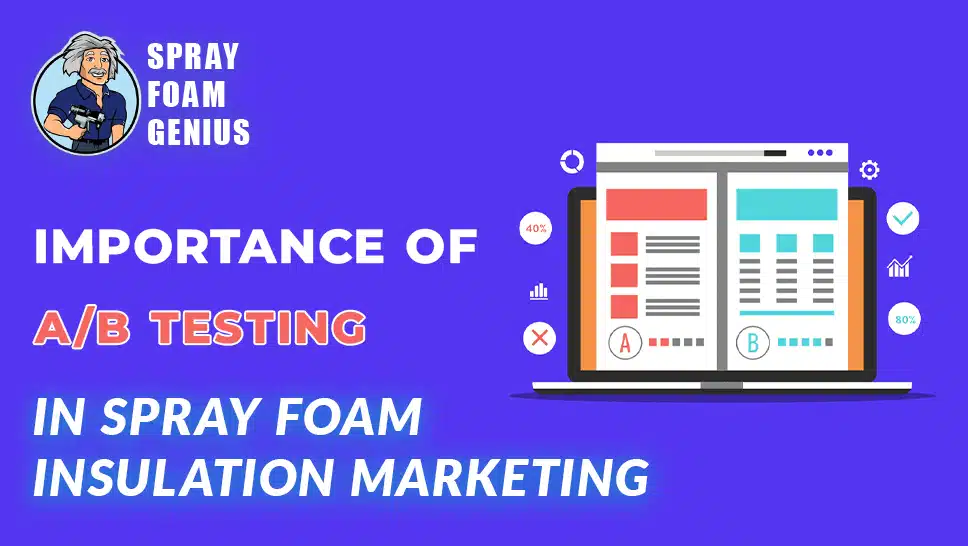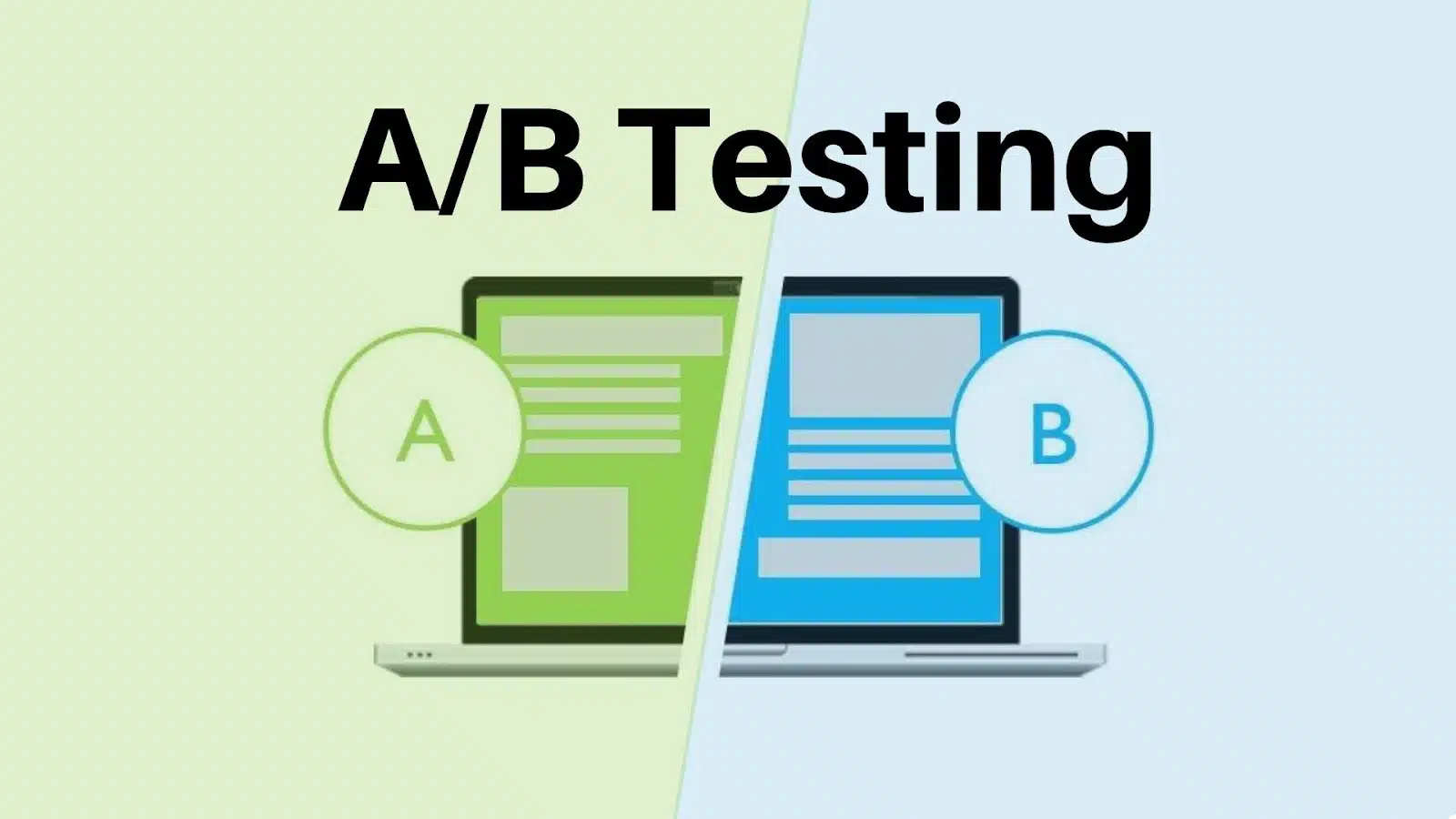
In the competitive realm of spray foam insulation, where the quality of your product often speaks for itself, your marketing efforts must work tirelessly to capture the attention of potential clients. Spray foam insulation contractors in the USA and Canada need to ensure their marketing strategies are as efficient and effective as possible. One essential tool to help optimize these strategies is A/B testing. This method can be a game-changer in understanding what resonates with your audience and improving your overall marketing performance. In this comprehensive guide, we’ll explore the significance of A/B testing in spray foam insulation marketing and provide actionable insights to help you leverage this powerful tool.
Understanding A/B Testing
What is A/B Testing?
A/B testing, also known as split testing, is a method used to compare two versions of a marketing element to determine which one performs better. By presenting different versions to different segments of your audience and analyzing their interactions, you can identify which version achieves your desired outcome more effectively. This approach can be applied to various marketing elements, such as emails, landing pages, advertisements, and more.
Why A/B Testing Matters
The primary advantage of A/B testing is that it allows you to make data-driven decisions rather than relying on assumptions or guesswork. Here’s why A/B testing is crucial:
- Optimize Conversions: By testing different variations of your marketing elements, you can identify which ones lead to higher conversion rates, such as more inquiries or sign-ups.
- Enhance User Experience: Understanding what appeals to your audience can help you design more user-friendly experiences, whether on your website, in your emails, or through your ads.
- Increase ROI: A/B testing enables you to allocate your marketing budget more effectively by focusing on strategies that deliver the best results.
How A/B Testing Can Transform Your Spray Foam Insulation Marketing
1. Improving Your Website’s Performance
Your website serves as the primary touchpoint for potential clients seeking spray foam insulation services. A/B testing can help you enhance various aspects of your website to increase engagement and conversions. Here’s how:
Headline Testing
The headline is often the first thing visitors notice when they land on your website. Testing different headlines can reveal which phrasing captures attention and encourages visitors to stay on your site. For example, test variations like “Get the Best Spray Foam Insulation Services” versus “Top-Rated Spray Foam Insulation for Your Home.”
Call-to-Action (CTA) Optimization
CTAs are crucial for guiding visitors to take specific actions, such as requesting a quote or scheduling a consultation. A/B testing different CTA button texts, colors, and placements can help determine what prompts users to act. For instance, compare “Request a Free Quote” with “Get Your Free Estimate Now” to see which drives more engagement.
Content Layout
The way content is arranged on your website can significantly impact user experience. A/B testing different layouts—such as placing testimonials higher on the page versus having them lower—can help you find the format that keeps visitors on your site longer and encourages them to explore your services.
2. Enhancing Your Email Marketing Campaigns
Email marketing remains a vital tool for engaging with potential clients and keeping current ones informed. A/B testing can refine your email campaigns to achieve better results:
Subject Lines
The subject line is the gateway to your email content. Testing different subject lines can help you understand which ones lead to higher open rates and engagement. For example, try variations like “Discover the Benefits of Spray Foam Insulation” versus “Why Spray Foam Insulation is a Game-Changer for Your Home.”
Email Content
The content of your emails—including body copy, images, and offers—can be tested to determine what resonates best with your audience. For instance, test different styles of copywriting or offers, such as “Limited-Time Discount on Spray Foam Insulation” versus “Save Big on Your Insulation Installation Today.”
Send Times
Timing can play a critical role in email effectiveness. A/B testing different send times—such as mornings versus afternoons—can help identify when your audience is most likely to open and engage with your emails. This insight can improve your overall email marketing strategy.
3. Optimizing Your Paid Advertising
Paid advertising, including Google Ads and social media ads, is an essential component of your marketing strategy. A/B testing can enhance your ad performance:
Ad Copy
Test different versions of your ad copy to determine which message attracts more clicks and conversions. Minor changes in wording can have a significant impact on performance. For example, compare “Expert Spray Foam Insulation Services” with “Top-Quality Spray Foam Insulation for Your Home.”
Visuals
The images or videos used in your ads can greatly affect their effectiveness. A/B testing different visuals helps you determine which ones capture attention and drive action. For instance, test a photo of a completed insulation job versus an image of the insulation material itself.
Targeting Options
Effective targeting ensures your ads reach the right audience. Test various targeting options—such as demographics, interests, and geographic locations—to find the most responsive audience segments. This helps refine your ad campaigns to maximize their impact.
Implementing A/B Testing in Your Marketing Strategy

Setting Clear Objectives
Before starting an A/B test, it’s crucial to define clear objectives. What do you hope to achieve with the test? Whether it’s increasing click-through rates, boosting conversions, or enhancing user engagement, having specific goals will guide your testing process and help you measure success.
Designing Your Test
Designing an A/B test involves creating two or more variations of the element you wish to test. Ensure that the variations are distinct enough to provide meaningful results. For example, if testing a CTA button, create two versions with significantly different wording or colors.
Analyzing Results
Once the test is live, monitor the performance of each variation. Key metrics to consider include conversion rates, click-through rates, and user engagement. Use these metrics to determine which version performs better and why. For instance, if one headline leads to higher engagement, analyze what made it more effective.
Implementing Findings
After analyzing the results, implement the winning variation into your marketing strategy. This could mean updating your website, adjusting your email content, or refining your ad campaigns. Continuously test and optimize other elements to keep improving your marketing efforts.
Common Mistakes to Avoid in A/B Testing
Testing Too Many Variables
Testing multiple variables at once can complicate results and make it difficult to identify the specific factor that influenced performance. Focus on one element at a time to ensure that you can accurately attribute changes in performance to that particular variable.
Inadequate Sample Size
A small sample size can lead to unreliable results. Ensure that your test reaches a sufficient number of users to obtain statistically significant data. This helps ensure that your findings are representative of your entire audience.
Neglecting to Monitor External Factors
External factors, such as seasonal trends, market changes, or promotional events, can impact your test results. Consider these factors when analyzing performance to avoid misinterpretation. For instance, if you run a test during a holiday season, ensure that the results are not skewed by the holiday’s influence.
The Role of A/B Testing in Data-Driven Decision Making
A/B testing is a cornerstone of data-driven decision-making. By relying on empirical evidence rather than intuition, you can make more informed decisions that enhance your marketing effectiveness. This approach helps in:
- Reducing Risk: Minimize the risk of implementing ineffective strategies by relying on data rather than assumptions.
- Maximizing ROI: Allocate your marketing budget more effectively by focusing on strategies that deliver the best results.
- Improving Customer Experience: Tailor your marketing efforts to better meet the needs and preferences of your audience, enhancing their overall experience.
Why Spray Foam Insulation Contractors Need A/B Testing
For spray foam insulation contractors, standing out in a niche market requires more than just a high-quality product. Effective marketing strategies are essential for differentiating your services and capturing the attention of potential clients. A/B testing provides valuable insights into what works and what doesn’t, allowing you to refine your approach and achieve better results. By leveraging data-driven insights, you can enhance your marketing efforts, improve client engagement, and drive more leads to your business.
Ready to Optimize Your Marketing Strategy?
At Spray Foam Genius Marketing, we specialize in helping spray foam insulation contractors like you optimize your marketing strategies. Our team offers expertise in SEO, Google My Business optimization, local SEO, website development, lead generation, social media marketing, and reputation management tailored specifically for the spray foam insulation industry.
Don’t leave your marketing success to chance. Contact us today to learn how A/B testing and other advanced strategies can transform your marketing efforts. Call us at 877-840-FOAM for USA and 844-741-FOAM for Canada visit our website at sprayfoamgeniusmarketing.com, or email us at [email protected] to get started.
Let’s work together to take your marketing to the next level!
- 5 Google My Business Hacks to Double Your Leads for Spray Foam Insulation Contractors - January 14, 2025
- Why Spray Foam Contractors Cannot Ignore Reputation Management in 2025 - January 13, 2025
- Local SEO Secrets Every Spray Foam Contractor Must Know to Win in 2025 - January 13, 2025

